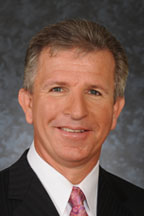
Professional Employer Organizations: An Option for Reducing HR Costs, Improving Benefits Packages
By Mike Viola, Executive President and Co-Founder, Oasis Outsourcing, written from an interview with CER
Colleges and universities intent upon reigning in costs may look at outsourcing human resources functions, especially “back office” financial benefits tasks. Among their options are staffing agencies, commonly used to supply temporary skilled labor during peak reporting seasons, and payroll service companies that organize and fulfill payroll payments. Both services can help businesses save costs by reducing paperwork and insuring compliance with the state and federal reporting requirements.
While these options may reduce costs, they do not address two HR areas vital to colleges and universities: Reducing health care costs, and providing enhanced benefits packages to attract top talent.
An option perhaps less well known is the professional employer organization, or PEO. The comprehensive PEO provides payroll processing, employee benefits, human resources support and risk management services. In addition to the varied product offerings, PEOs differ from traditional payroll and staffing companies in the level of expertise they bring to the entire range of HR functions, and the enhanced benefits packages they can provide for employees.
When PEOs came into existence in the mid-1980s, small- to medium-sized companies saw their merits almost immediately.
PEOs cut overhead costs and offered employees far better benefits — such as 401(k) plans, insurance policies, and workers’ compensation insurance — because they possess substantial economies of scale. There are currently approximately 3 million employees in the U.S. working under the PEO model.
As administrative costs burgeon, now may be the time colleges and universities recognize the value of the PEO for payroll, compliance, the intricacies of the Affordable Care Act (ACA), and other human resources functions.
As Mike Viola, executive president and co-founder of Oasis Outsourcing explained, the great innovation of the PEO model is that the PEO has a co-employment relationship with its clients. “We file payroll taxes for our clients under our tax ID number. This allows us to pool together employees from all of our clients. We have over 5,000 clients with about 160,000 employees. When we pool all those employees under one tax ID number, that provides us tremendous buying power in the areas of human resources, payroll, benefits and workers’ compensation.”
Viola noted that a PEO is different from a traditional staffing company, or temp agency, or even a payroll processor. These kinds of companies “do not assume many of the employer-related responsibilities and liabilities. With a PEO, we become a co-employer with our client company. We are the employer of record for payroll and benefits purposes only. Our clients are the employer of record for hiring, firing, supervising, and running the business.”
The advantages of scale
A PEO “levels the playing field,” Viola said, since an employer with only 10 employees can provide its people with the same benefits as a company with 5,000 workers. When smaller operations with a PEO compete for talent, the small school can “offer the exact same benefits package” as a much larger university.
Moreover, he continued, it is not just the upfront costs involved in providing a good benefits package. “With 10 employees, it would be cost prohibitive, number one, but there is also a huge administrative burden” to consider. “Our clients leverage us to be their back office and handle all of those functions.”
A good PEO customizes its services
A good PEO customizes its services to the client, Viola said. A school with no HR department and 10 to 20 employees might want to relegate all its human resources issues to a PEO. On the other hand, a larger school with 100 to 300 hundred employees “might have an HR generalist” on permanent staff for hiring and supervisory functions, but their needs would not require “a whole department for benefits and HR. They can utilize our staff.” With a PEO, he said, “it is really up to the client what they want to do on the HR side.”
Impact of the Affordable Care Act
There are “tremendous administrative responsibilities and liabilities associated with being an employer,” Viola said.
A PEO has the experience and the professional expertise to handle those issues, especially now that the federal Affordable Care Act (ACA) has come into effect.
“We can provide employees with Fortune 500 company benefits, and we administer those benefits,” he said. “We can keep our clients in compliance with everything related to those benefits, including the ACA.”
Increased productivity, not just cost containment
The broad experience of a PEO human resources division is particularly useful for a university, Viola noted, because a PEO can “also increase productivity through the training programs that we provide to the client.” The single benefit for an academic institution is clear: “You and your employees can focus on what you do best, which is running your school, while we focus on what we do best, which is handling all the associated human resources activities.”
Viola outlined the complexities of compliance for today’s colleges. “Especially with schools that operate in multiple states with multiple campuses, it becomes tricky,” he said. They face a plethora of sometimes conflicting state or international requirements. The advantage of a PEO’s expertise is “the ability to stay in compliance, offer competitive benefits, and reduce [the] overall cost profile in all of those areas.”
“We have clients and employees in every state,” Viola said.
“When a client joins Oasis, if it has multiple campuses or is located in multiple states, its employees have all the same benefits no matter where it is located.
Universities can open up another campus or buy another school. Really, everything is turn-key as it relates to the areas that we cover: HR, benefits, payroll and workers’ compensation.”
PEOs can limit budget surprises
Viola noted that schools typically work from budgets with predictable, fixed costs and income and have limited flexibility to respond to financial surprises. He believes that a PEO is particularly useful to colleges and universities because it controls exposure to unanticipated overruns.
“With our pricing advantages and our size, we tend to really control annual renewals and increases for costs to keep them in manageable levels,” he said. “A university can thus avoid big cost spikes.”
Cost savings, or cost neutral?
Removing the burdens of back office administration and the great purchasing power of pooled employees are obvious benefits, but are these efficiencies enough? Do professional employer organizations provide a university with true cost savings? Does a PEO turn out to be a cost neutral ‘improvement?’
“It depends,” Viola said. “Many times there are cost savings because we are purchasing benefits – whether it is health insurance, workers’ comp, 401(k) plans, dental, vision, or ancillary benefits. We are negotiating rates for thousands of employees and our typical client is much smaller than that. A single client simply does not have the purchasing power that we have. So, yes, we bring cost efficiencies and savings in those areas.”
In addition, he continued, “as clients scale and grow, one of the bigger areas of savings is that they avoid the need to hire additional resources to continue to grow. That is because they can leverage our HR, benefits, and payroll resources without having to hire additional staff for these functions.”
An added benefit from a PEO, Viola pointed out, is access to large IT systems, saying, “We provide a full HRIS—Human Resources Information System—technology, to our clients. That does everything from applicant tracking and electronic onboarding to Web-based payroll self-service. To acquire that technology would be a huge investment. The technology would also require continuous upgrades. All of that is part of the package with a comprehensive PEO.”
Addressing compliance issues
An important, but less obvious advantage to a PEO is its expertise in making sure its clients are in compliance with new laws and regulations.
A PEO keeps the university abreast of changes by providing monthly reports and monitoring. Viola said it begins with the initial assessments that the PEO submits in its proposal.
“We start by creating an employee handbook,” Viola said. “That ensures that our clients have all the appropriate policies and procedures. When we perform an HR interview and proposal, you could think of it as an HR audit. We review all our clients’ employment practices: their handbook, their job descriptions, classifications, etc. Throughout that discovery process, we learn whether they are either in compliance or not. They are hiring us to help keep them in compliance.”
Further, he noted, “there are things like eligibility tracking, unintended impact monitoring and compliance reporting, when it comes to the ACA, which we do through our HRIS technology and other tools. We collect historical payroll data from new clients. That way we can track the measurement periods and stability periods. We then provide the client with monthly reporting. We also notify any eligible employees during the administrative period when they are eligible for benefits. We perform those reviews and services through our internal systems. Because we are doing the payroll, we have all that information.”
The PEO review process
Among the advantages of using a professional employer organization is the review of HR practices and the ease of the process. Viola outlined the protocol: An initial meeting is arranged to review “the different products and services that we have. Then, in order to prepare our proposal, we garner information from our potential client about payroll and current benefits and data on the time currently spent on employee-related administrative functions.”
That discovery process would clarify “Who is taking care of FMLA? Who is administrating COBRA? Who is handling unemployment claims? Who is handling employee-related lawsuits? Who is doing handbooks?” Viola said. “We get a good feel for how much time is spent to accomplish those tasks.”
“The proposal is really a comparison of how the potential client is doing business now,” he continued, “and what it is costing, compared to what it would be if the business joined Oasis. The client then reviews that with the additional benefits to see if it makes sense to join us.”
However, he noted, “Not everyone who wants to be a client can be. We have financial requirements and risk requirements related to whom we take on.”
Summary: The advantages of using a PEO
A Professional Employment Organization can provide colleges and universities with HR department cost reduction and overrun containment, as well as improved employee benefits packages. PEOs also provide expertise and data management for federal and state compliance-related matters. In Viola’s words, a PEO’s ultimate service is “providing our clients with peace of mind.”
For a college or university looking to contain costs and enhance benefits, a professional employment organization is worth consideration. The findings of the PEO’s discovery and review process for a proposal— and the costs of the service —will ultimately be the significant factors in deciding if a PEO is the right option for your college or university.

Mr. Mike Viola, a successful industry veteran, joined Oasis Outsourcing at its inception in 1996 and was instrumental in building the Company’s sales, marketing and client services platform. Prior to joining Oasis Outsourcing, he was the #1 performing Regional Sales Manager at Paychex Business Solutions, where he drove unprecedented PEO Sales. Before joining Paychex, Mr. Viola had a successful career in banking, serving as Vice President of Corporate Banking for both Citicorp and Sun Trust. Mr. Viola currently has responsibility for new client acquisition and sales force training and development. He is also actively involved in developing several new markets to further expand the company’s national footprint. Mr. Viola received a Bachelor of Science and Business Administration degree from Stetson University.
Contact Information: Mike Viola // Executive Vice President of Sales // Oasis Outsourcing // Phone: 561-227-6590 // www.OasisAdvantage.com






